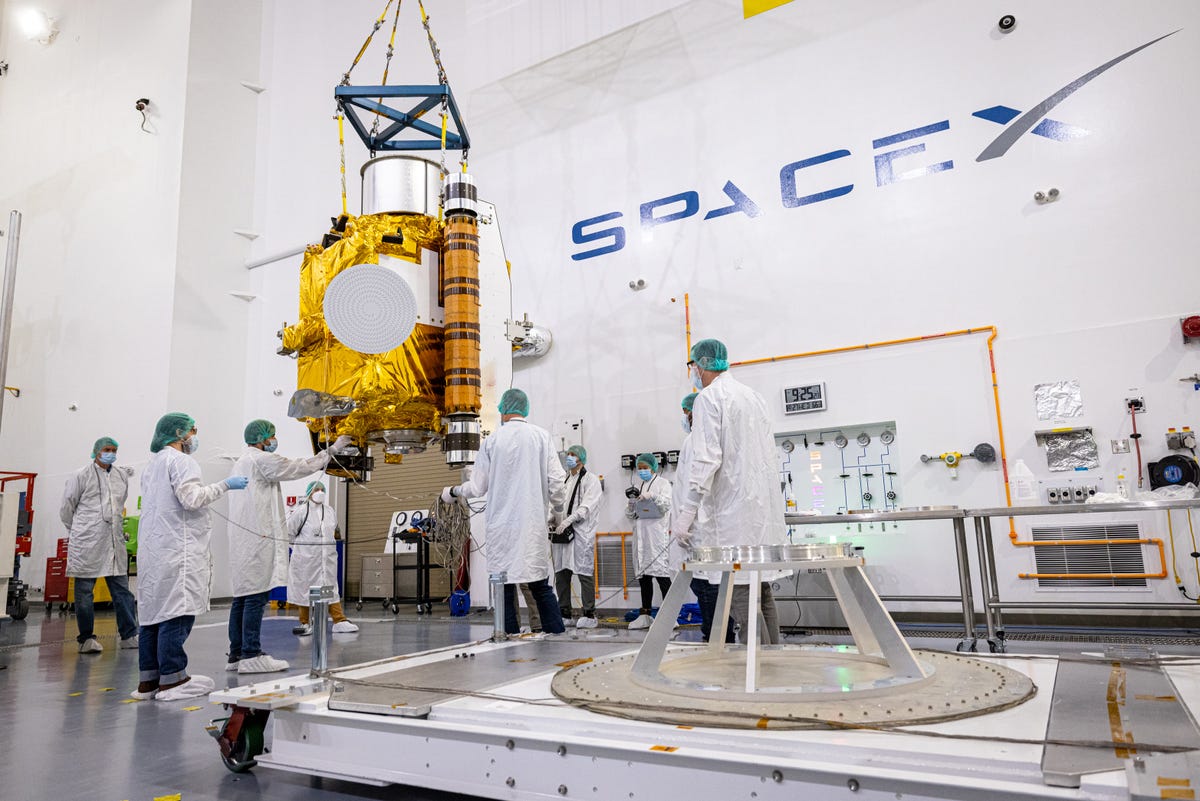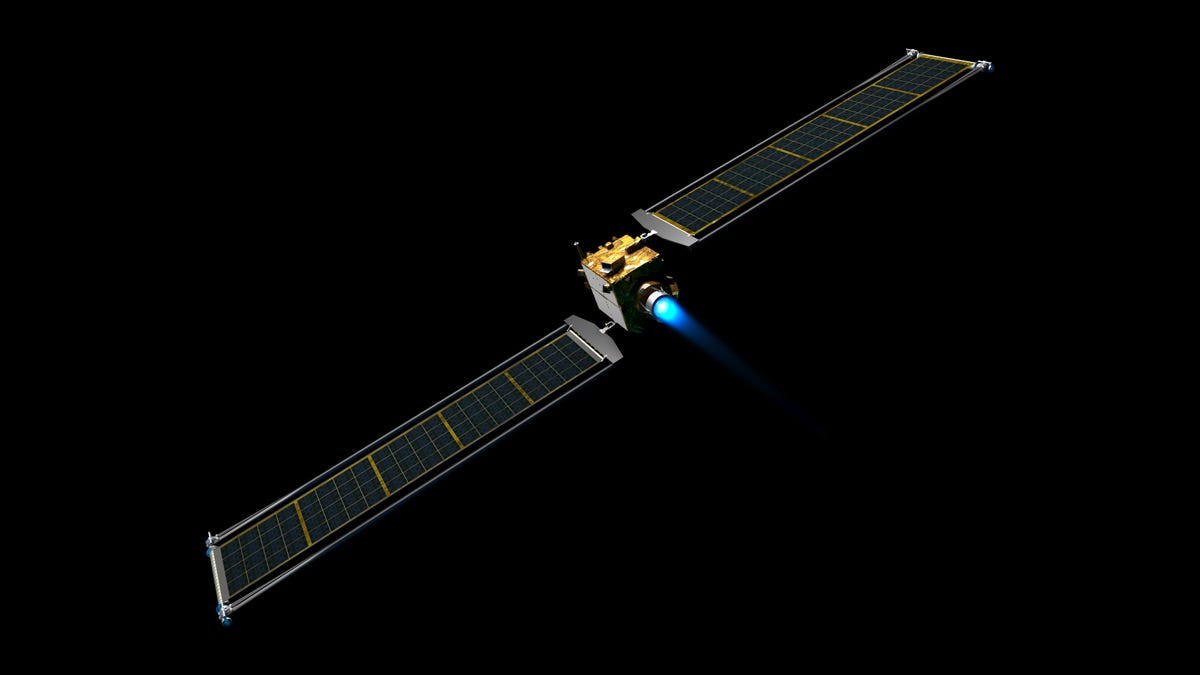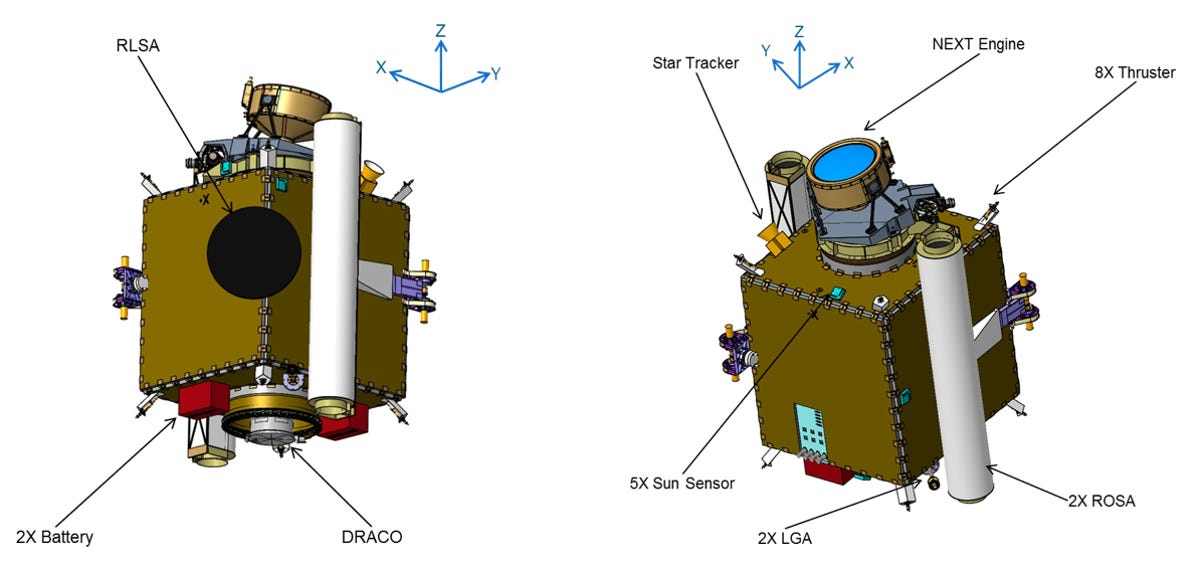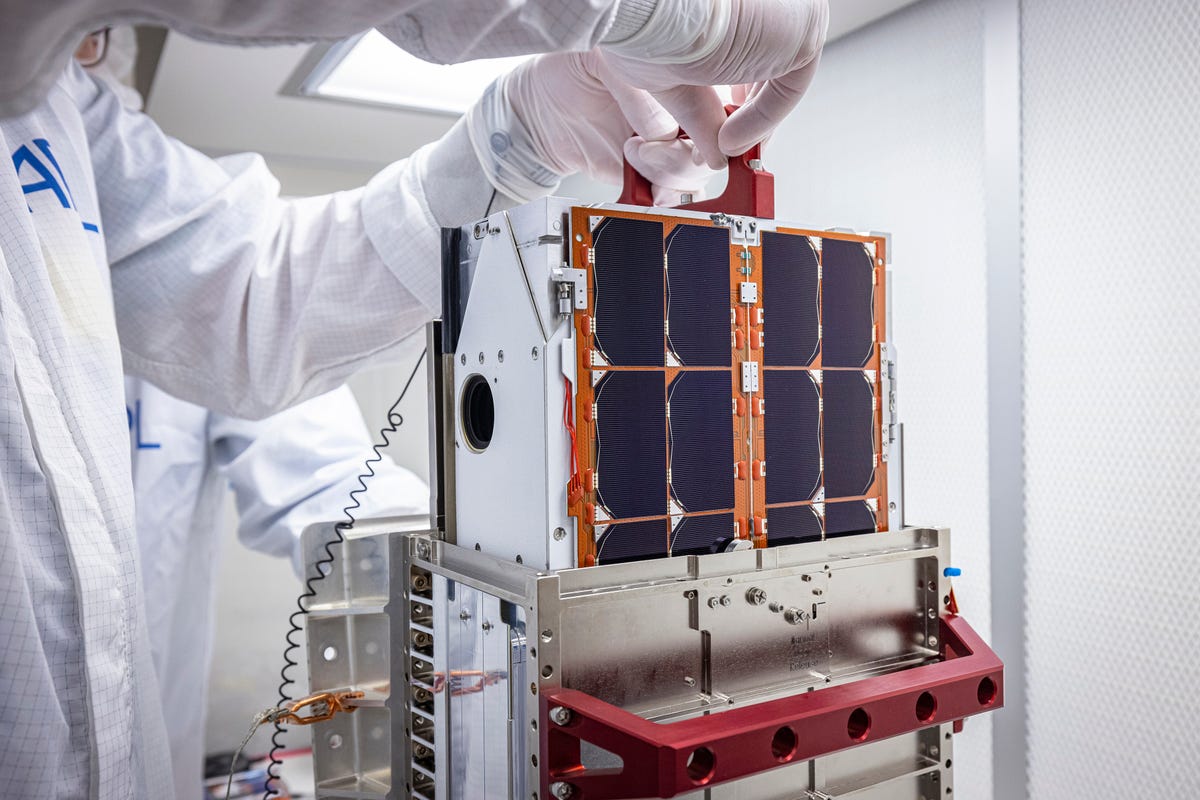NASA’s deep-space exploration robots are typically engineering marvels built for longevity. You have the Voyager probes at the end of the solar system, dutifully operating decades after launch. The Parker Solar Probe dances around the sun, sporting an epic heat shield that’ll hopefully keep it operating for years. And Lucy, though it’s had some issues, is currently on a mission to visit a handful of space rocks near Jupiter — a journey poised to extend over the next 12 years.
Then you have DART.
DART (Double Asteroid Redirection Test) wasn’t destined for decades of solar system science. The spacecraft launched in November 2021 and, well, just straight up crashed into an asteroid on Monday. It’s now totally destroyed — but its death was the purpose of its existence. DART is NASA’s test run of a planetary defense system intended to nudge incoming asteroids away from Earth by literally smashing spacecraft into them.
Asteroids, which range in size from refrigerators to automobiles, collide with our planet more often than you might think. Thankfully, these impacts aren’t generally too menacing because most of the rock burns up in Earth’s atmosphere. But nearly 66 million years ago, as you may recall, dinosaurs were wiped out by a massive space rock by the name of Chicxulub.
The DART mission’s objective was simple: NASA wanted to understand if we can crash into an asteroid to prevent such a calamity from also wiping out humans. So, as a proof of principle the spacecraft struck a little asteroid called Dimorphos, which is orbiting a larger asteroid, Didymos.
On Monday, the DART spacecraft autonomously navigated toward and collided with Dimorphos when the rock was about 7 million miles from Earth — its closest point to our blue planet. The target asteroid is about as big as the Washington Monument is tall, and upon impact, the team behind DART hoped the rock’s trajectory and speed were slightly altered.
The take-home message is that this is basically a technology demonstration — a way for NASA to get valuable insight on how we may one day deflect a scary asteroid really on a collision course with Earth. To be clear, this particular floating rock never posed a threat to our planet. But if DART was successful at knocking Dimorphos a bit off course, we’ll know we may have a workable tactic for one day fending off asteroids that are actually dangerous.
Target acquired: Dimorphos
Cruising through our solar system is a grayish space rock about a half mile wide known as Didymos, which, with a gentle gravitational pull, keeps a companion asteroid on a leash. That second, smaller fragment orbiting Didymos was DART’s target: Dimorphos.
Scientists behind DART selected Dimorphos for the test because its orbit around Didymos mimics how potentially threatening near-Earth asteroids orbit around the sun. Asteroids are gravitationally bound to our star, which could put them on a collision course with Earth. But Dimorphos’ orbit isn’t locked to Earth or the sun but rather to Didymos. This makes it a perfect testing ground for NASA — they tried to crash DART into the tiny rock to see how that changes its orbit around its larger companion.
NASA predicted the crash would be strong enough to adjust Dimorphos’ orbital period by a few minutes. More specifically, calculations show the impact will bring Dimorphos closer to Didymos.
Now that impact is complete, the agency will begin sifting through data of the spacecraft’s trajectory and final moments as well as of Dimorphos’ new route of travel to see whether those calculations were correct. “Mostly, what we’re looking to do is change the speed of the incoming object by a centimeter per second or so. That’s not very fast, but if you do it enough seconds in advance, you can cause it to miss the Earth entirely,” according to the mission overview by Johns Hopkins University’s Applied Physics Laboratory.

After moving DART to SpaceX’s payload processing facility at Vandenberg Space Force Base in California, DART team members carefully removed the spacecraft from its shipping container and moved it to a low dolly.
NASA/Johns Hopkins APL/Ed Whitman
This approach — one of many ideas for saving humanity from asteroids — is known as “deflection by kinetic impactor.” According to the team, this was the first time the method had been employed intergalactically.
“This technique is thought to be the most technologically mature approach for mitigating a potentially hazardous asteroid,” NASA’s planetary defense officer, Lindley Johnson, said in a statement. “It will help planetary defense experts refine asteroid kinetic impactor computer models, giving insight into how we could deflect potentially dangerous near-Earth objects in the future.”
The way it works is pretty intuitive.
Quick, throw something at it!
Let’s say your buddy is riding a skateboard extremely fast and is headed toward your dog. One (chaotic) way for you to save your dog is to run into your skateboarding friend. When you collide with your friend, the energy you’ve built up changes their direction and lowers their speed. You’ve just become a kinetic impactor, designed to throw your skateboarding buddy off-course and save your dog.
DART is expected to work in a similar way, but it’s not trying to protect any canines, it’s just trying to knock the skateboarder off course. The spacecraft, which is about the size of a school bus, flew into Dimorphos at a speed of about 4.1 miles per second. That’s roughly 14,760 miles per hour (23,760 kilometers per hour).

Illustration of the DART spacecraft with its rollout solar arrays extended.
NASA/John Hopkins APL
On impact, NASA says, the small asteroid’s, or moonlet’s, orbital speed should change by a fraction of a percent, which would lead to an orbital period that’s several minutes slower.
Though Dimorphos poses no threat to Earth, Earth-based telescopes can easily catalog the bump’s effects, because at just about 7 million miles away, the impact was close enough for scientists to observe any changes in the rock’s orbit around its companion. Such observations will ultimately help scientists perfect future planetary defense weapons based on valuable information retrieved from DART’s prototype.
The brave spacecraft’s specs
DART was rather simple. It was a relatively inexpensive metal box with two roll-out, extendible solar arrays for power, a single camera and a smaller satellite, or CubeSat, that was deployed right before impact. The limited number of tools made sense, as the spacecraft was doomed to die in a suicide mission.

Two different views of the DART spacecraft.
NASA
Here are some specifics about the DART spacecraft:
Cost:$308 million.
Weight: 1,345 pounds (610 kilograms) at launch / 1,210 (550 kg) pounds at impact.
Box dimensions: 3.9 by 4.3 by 4.3 feet (1.2 by 1.3 by 1.3 meters).
Solar array dimensions: 27.9 feet each (8.5 meters).
Extra instrumentation: DRACO camera and one CubeSat.
Engine: Ion propulsion technology/xenon thrusters.

DART team engineers lift and inspect the CubeSat. The teeny satellite will deploy 10 days before DART’s asteroid impact, providing essential footage of the collision and subsequent plume of materials. Here, one of the solar panel arrays on the satellite’s wings is visible.
NASA/Johns Hopkins APL/Ed Whitman
While DART’s spacecraft payload was hyper-minimal, the team’s programming behind the course was highly advanced. That’s because the brave little craft behaved autonomously throughout the mission.
Until the end, DART
The spacecraft’s tools might’ve been few, but they were key. The Didymos Reconnaissance and Asteroid Camera for Optical navigation, or DRACO, device was an ultra-high-resolution camera that measured the size, shape and geologic composition of asteroids in its vicinity.
DART also had a metal-oxide semiconductor and image processor that helped the spacecraft determine the precise positioning of Dimorphos and stream information back to Earth in real time, by way of an antenna attached to the machine.
In addition, DART was armed with a navigational toolkit with state-of-the-art directional coding, including the star tracker, which is my personal favorite NASA tool, to ensure it hit Dimorphos at exactly the right moment — ding, ding: the 7 million miles (11 million kilometers) checkpoint. Ten days before DART smacked into its target, it sent a CubeSat out. That offshoot will preserve the kinetic impact’s chronicle, despite DART now being nothing more than a pile of rubble somewhere in the cosmos.
Though right up until the very end, DART performed its duty. NASA was able to catch the collision’s juicy details before, during and after impact.
“In its final moments,” the Johns Hopkins University overview says, “DART’s DRACO camera will help characterize the impact site by providing high-resolution, scientific images of the surface of Dimorphos.”
Then: boom.
“This one’s for the dino’s,” said DART. Probably.
This piece was originally posted when DART launched in November 2021.